Tower Hamlets’ corporate home to make way for 36- and 30-storey blocks
Councillors in east London are being advised to condemn their 1990s headquarters to the wrecking ball to make way for two SimpsonHaugh-designed residential towers.
Tower Hamlets Council’s strategic development committee is set to back the demolition of its Mulberry Place town hall building at Blackwall along with the neighbouring Lighterman House office block, both designed by Sten Samuelson and the Beaton Thomas Partnership.
The move will make way for two new towers on the former East India Dock site: a 36-storey block featuring 716 student rooms and a 30-storey tower providing 150 build-to-rent flats.
Developer EID, which is a subsidiary of LaSalle Investment Management, is also seeking outline planning permission for two further buildings – a 35,000sq m data centre and a smaller building featuring 5,940sq m of flexible commercial floorspace and up to 660sq m of new space for community use. The community space could include a new swimming pool.
Others working on the scheme include project manager and cost consultant Quartz, M&E engineer Hoare Lea, structural engineer WSP and data centre architect Nicholas Webb architects. Façade engineer is Ramboll.
Tower Hamlets is due to move out of its current town hall, which is leased, and into a new base at the grade II-listed former Royal London Hospital building in Whitechapel, which has been converted to designs by AHMM.
Almost exactly four years ago, the council reacted with fury to proposals for its current headquarters to be converted into a 204-home residential block, under permitted-development rights.
Documents supporting the SimpsonHaugh proposals say the office-to-resi conversion of Mulberry House and the neighbouring Lighterman House was abandoned because of concerns over the quality of accommodation and the scheme’s viability.
The design and access statement for the current project says consideration was also given to retrofitting Mulberry Place as a data centre. However the document says a whole-life carbon study suggested the upfront impact of building a new data centre would be outweighed by lower long-term emissions.
Under the proposals recommended for approval, SimpsonHaugh’s residential towers will be built on the site of Lighterman House, while outline consent would earmark the data centre for the current site of Mulberry House.
Outline consent for the project’s fourth building, which will house the new office space and community facilities, locates that block on part of the site currently occupied by a water feature.
Recommending the plans for approval, Tower Hamlets planning officers said SimpsonHaugh’s tower proposals were of “high quality and interesting design” and would complement the surrounding built context.
Tower Hamlets’ strategic development committee meets to consider the application at 6.30pm tomorrow.





















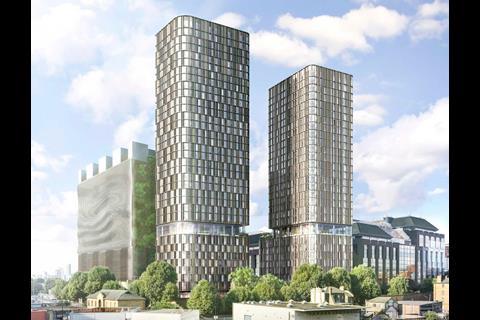
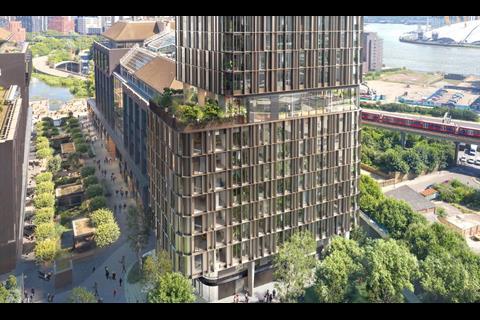
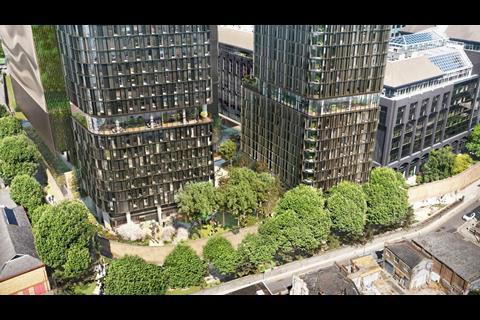
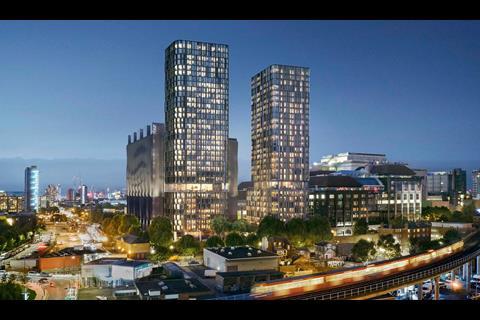
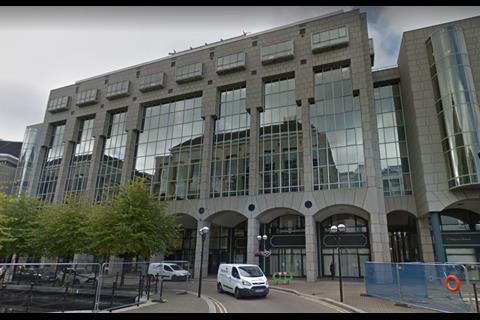
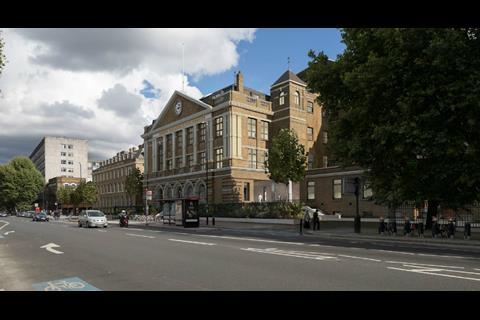







No comments yet